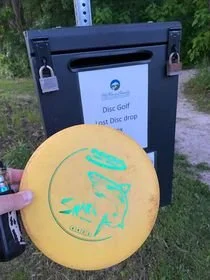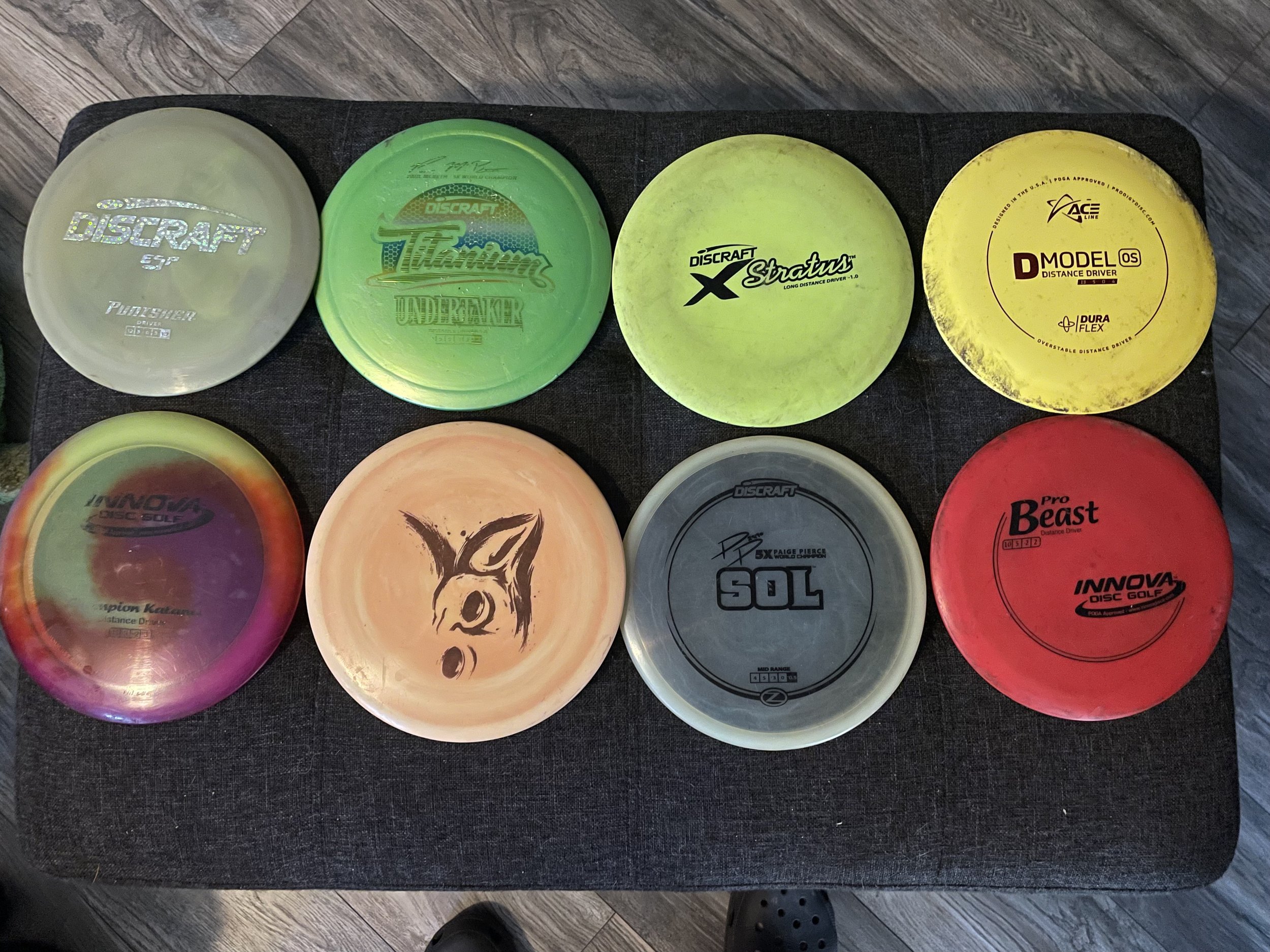What it takes to run a disc return program
I wear many hats in this sport. Player, volunteer, organizer, promoter. But there is one job I do that is both rewarding and exhausting at the same time. I oversee the lost disc box at my local course. In fact, it was my (bad?) idea to get the box installed. Many people ask me about the box, how I was able to get one, and what it takes to run such a program. This week I’m going to break down the pros and cons of taking on such an endeavor.
Fel-Pro RRR had just re-opened as a new 18-hole course, and I was eager to get involved. First, I signed up as a volunteer, but within a couple months I thought it would be a great idea to have a lost and found return program. When I mentioned it to my buddies, they all agreed that it was a good idea, but nobody wanted to run lead. They said it would consume all my time, and that it would be a lot of work. It’s been well over a year since I started the program, and you know what? They were absolutely right. I tell you now, if you are wanting to do something like this in your area, you need to be really committed.
Ok, so warnings aside, I decided I wanted to do it anyway. The first step was reaching out to the organization in charge of the course, in this case the McHenry County Conservation District, to see if they would even allow such a thing. I was told, “yes, as long as none of our staff are involved.” I agreed, and after an online search for a drop box, the Preserve agreed to purchase and install it near the practice basket. Then I created a Facebook group where people could check on their lost discs, and where I could post pictures regularly.
After a couple weeks I went to check the box, and the first time I looked, it was empty. Strange, but as it was discovered, the box we purchased was just too easy to break in to, and people were able to pull open the top slot and get their hands in and remove the discs. (If this was you, you are a bad person, and all your putts will be bogeys!). I consulted with a metal working friend of mine, and he offered to help shore up the box to prevent future theft. We sealed the top, added a slit style drop in, and doubled the padlocks. Let’s see somebody steal a disc now. The next week, I came back, and voila, discs! I was excited to see the improvements worked.
So now what? My policy is to take pictures of all the discs and post them on our Facebook group. All inked discs I text along with a picture of their disc, and then I wait. Initially, I was trying to be at the course every Friday for one hour after work to meet people so they could pick up their discs, but after a few weeks and only one person meeting me, I thought there must be a better way.
Some course partner with a local disc golf pro shop to leave discs there for pickup, and that is an ideal situation. You not only have a place that will accommodate most schedules, but you also drive traffic into the store. However, in my case, I don’t have that luxury, so I have devised a plan where I just leave the discs in my mailbox, and people swing by and pick them up at their leisure. I have found that this is an effective way to return discs. I try to text every batch of discs in one session, and most of the time I get a response, and I instruct them how to pick up. I give them one week to come get their disc, and then it goes into ‘the pile’ (more on that shortly). Another option, although rarely used, is the shipping option. For $8 I will ship a disc, in a box, to the destination of their choosing. For the most part, the discs I find are from locals, but on occasion somebody who was visiting from out of state may lose one, and this makes it convenient to get it back to them.
There you have it. Easy right? Not so much. Let’s get into the pros and cons of doing something like this. I’ll start with the cons. I don’t have exact percentages here, but most discs that I find never get returned. And out of the people that do text back and get excited about picking up there discs, about one in ten don’t show up to do so. In the beginning I found myself trying to accommodate schedules and driving out of my way to return a disc, but that has really improved with my new pickup system. I get texts and messages regularly about lost discs, and I do my best to respond to each one, but on occasion one slips through. I have had people claim a disc, only later to discover that it was in fact another’s. This is rare, but still frustrating. And the biggest con of all? The buildup of lost discs in my house. It’s a couple discs this week, a handful next week, but in short order, I find myself with stacks of discs that I have no interest in throwing, and that I’m not going to sell. Which brings me to the pros.
Regarding all those stacks, I hold them for 60 days, and then they get donated. So far, I have donated discs to local youth programs, as well as Disc to Africa, an amazing non-profit that is growing disc golf on that continent. It gives me great joy knowing that these lost discs will soon be in the hands of new players just experiencing our sport for the first time. Or in the hands of children who may not be fortunate enough to afford new plastic. It is the disc golf ‘circle of life’, and it makes me smile. Another pro is seeing the smiles or hearing the stories when a lost disc is returned. I love when somebody finds me on the course and thanks me for returning their ’ace’ disc, or that perfectly beat in Destroyer that is irreplaceable. I love when I show up to empty the box and players rush over to see if their disc was returned. Just this week I had a group of young boys run up and get three discs out of the box, and the joy on their faces made it all worth it.
Okay, if you’re still reading and are interested in doing this on your own, I hope that these insights have helped. I think it’s a great thing to do for your community, and a wonderful way to help grow the sport. My last thought on this whole thing is this: INK YOUR DISCS! I can’t return them to you if I don’t know who owns them.






